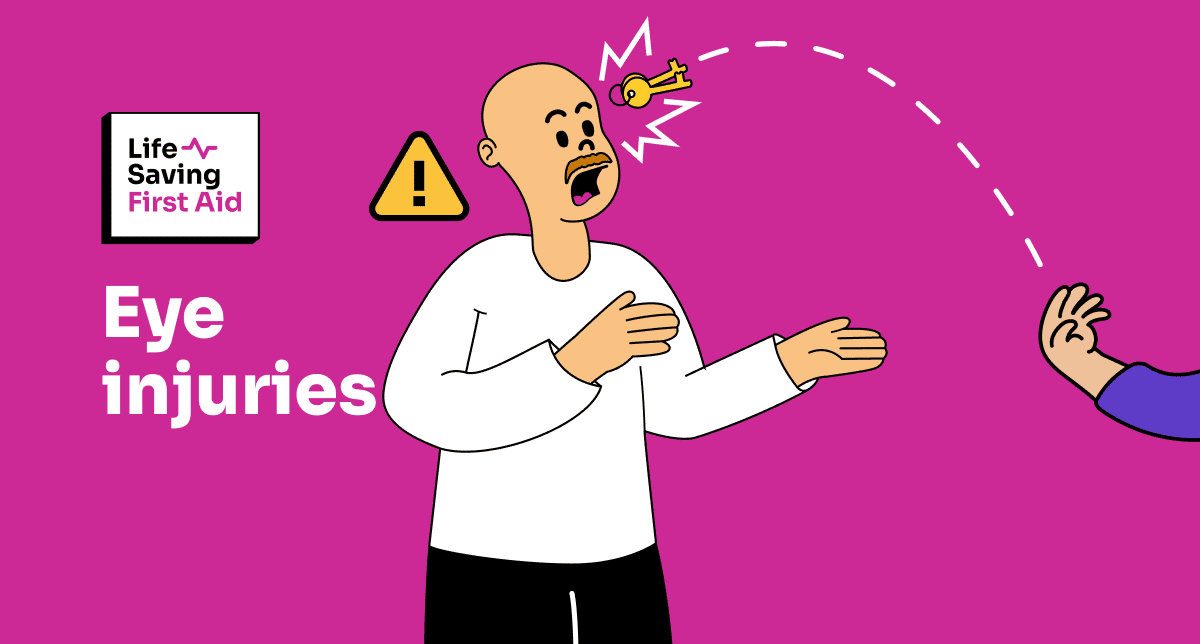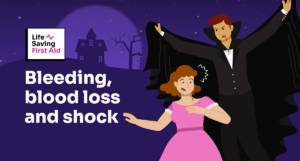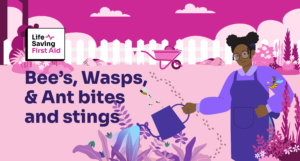Introduction
Because our eyes are two of the body’s most delicate and complex organs we need to avoid eye injuries as best we can.
And here’s an… eye-opener for you, our eyes do not actually see anything!
As the great Roman writer, Publilius Syrus once said “The eyes are not responsible when the mind does the seeing.” Obviously, a man of great…insight. A man of….vision.
As you can… see, in this blog I am talking about our eyes. I am going to…. focus on eye injuries, (and bad puns apparently!).
We are going to look at the many different factors that can cause Injury to the eyes including some of the common causes in our everyday environments such as stones, sporting balls, dirt, and chemicals.
It seems that around a whopping 70 to perhaps 80% per cent of all the sensory receptors in your whole body are in our eyes.
Also, in order for us to see, recognize, and understand something—nearly half of our entire cerebral cortex has to get involved. That’s a lot of brain power.
How do your eyes work?
Your eyes iris will change in size to allow more or less light in. This depends on the amount of light getting reflected into the eye.
We have all stepped outside during a bright day and felt blinded at first before our eyes adjust. This is the process of our iris adapting to lighting conditions.
Depending on how far away the object being viewed is, the lenses will change shape.
To focus your eyes ligaments surrounding your eye pull or release the lenses. This is called accommodation.
When light enters the eye through the pupil, it strikes photoreceptor cells in the retina called rods and cones.
Rod cells are responsible for peripheral vision and night vision, while cone cells react to brighter light, colour, and fine details.
When light hits its corresponding rod or cone, this activates the cell, causing nerve impulses to fire through the optic nerve — the middleman between the eye and the brain.
The impulses travel from the optic nerve to the visual cortex and then to other parts of the brain.
These image impulses arrive at the brain upside down. The brain must then transform the image to right side up for us to comprehend it.

So, while your eyes do a really good job of capturing light from objects around you, transforming that into information, and sending that information to your brain, your eyes don’t actually “see” anything.
That part is done by your visual cortex and your brain. Neurons in your brain work simultaneously to rebuild the image passed to the brain from the optic nerve.
Your brain actually responds better to shapes and edges first. Colour and shading are used to further differentiate objects from one another. Your eyes are also set slightly apart. This gives you the ability to see in stereo and interpret 3D images. Unfortunately, this also creates an image that needs to be corrected by you guessed it, your brain.
More than meets the eye
As you can see, there is more going on with your visual system than you imagine. Complex parts of your brain that have evolved over aeons to produce a crisp, sharp image are constantly being used to help you see and understand the world around you.
This means that the brain will also fill in the gaps to make sense of the image received. This is why we can be tricked by optical illusions, or people can “see” the same thing but understand it differently.
It also means that any permanent damage to your eyes will have a profound effect on how you perceive your environment.
Eye injuries
An eye injury can be caused by many different factors, but some common causes exist in our everyday environment such as stones, sporting balls, dirt, residue, sand, and wooden splinters. Other common causes include body parts, chemicals, welder’s flash, ultraviolet light, and smoke.
Eye Injuries caused by foreign bodies
A foreign body is defined as “an object in your eye that shouldn’t be there”. This includes a speck of dust, a wood chip, a metal shaving, an insect, or a piece of glass. The common places to find a foreign body are under the eyelid or on the surface of your eye.

Signs and Symptoms:
- sharp pain in their eye followed by burning and irritation
- feeling that there is something in their eye
- watery and red eye
- scratchy feeling when blinking
- blurred vision or loss of vision in the affected eye
- sensitivity to bright lights
- bleeding into the white of the eye
Most injuries from a foreign body in the eye are minor and usually heal without further problems given the right care. However, possible complications from eye injuries include:
- infection and scarring – if the foreign body is not removed from your eye, it may lead to infection and scarring.
- corneal scratches or abrasions – a foreign body may scratch the cornea, which is the clear membrane on the front of the eye. Commonly, the foreign body is trapped under the upper eyelid.
- ulcer – sometimes a scratch on the cornea doesn’t heal. A defect on the surface of your eye (ulcer) may form in its place.
- penetration of the eye – sometimes a projectile object can pierce the eye and enter the eyeball, causing serious injury and even blindness
- corneal scarring – this can cause some degree of permanent visual impairment.
Management
As with all First Aid incidents you should apply the initial action plan of DRSABCD and use proper PPE if available.
For eye injuries, if First Aid is applied immediately when irritation or injury occurs you decrease the possibility of infection or loss of sight enormously.
If the eye injury involves foreign irritants such as dust getting in the eye, you may follow these general procedures for flushing out irritants
- Keep the casualty calm and reassured.
- Use clean running water to flush out irritants in the eye.
- Make sure the eye is open throughout the procedure.
- Allow the casualty to blink.
- Avoid rubbing or otherwise disturbing the affected eye, and it is recommended to see an eye doctor
In cases where there is a penetrating wound in the eye and the object is still embedded in the injury, you must follow the following procedures:
- Do not remove the penetrating object
- Reassure the casualty and advise them to minimise eye movement. Placing a patch over both eyes, if the casualty is willing, can reduce the injured eye movement
- Wrap a bandage around the protruding object or form doughnut-shaped dressing to place over and support the protruding object when dressing and bandaging the injury. This will avoid putting pressure on the object with the bandage
- Be sure to immobilise the object.
- Seek medical assistance Call 000
Eye injuries due to burns
Burns to the eye are serious as they can cause partial or complete loss of sight. The worst type of eye injury
They can be caused by chemicals, heat (flames or radiant heat), a welding flash, ultraviolet lights, glues, and solvents. If chemicals contact the eye, you must apply First Aid as soon as possible

Signs and Symptoms
Burns to the eye will cause
- immediate pain and swelling
- become red and watery
- your casualty may be more sensitive to light.
However, if the burn is caused by a welder’s flash it will not be until several hours afterwards that they will start to feel the effects and realise they have an eye injury
Management
- Calm and reassure the casualty
- Open their eyelids carefully
- Carefully wash the eye or eyes with cold flowing water for 20 minutes
- Place an eye pad or soft, clean dressing over the injured eye
- Call 000
Wounds causing eye injuries
Fighting or playing sport can cause direct impact to the eye and serious eye injuries such as cuts and bruising around the eye.
Cuts to the eyelid can bleed freely so you will need to apply a dressing to the eyelid to halt the bleeding as soon as possible.
It’s important you apply the dressing with extreme care to avoid additional pressure on the eye which may cause more damage.
Don’t forget to reassure the patient and advise them not to move their eyes. Make them as comfortable as possible even lie them on their back.
And, of course, use DRSABCD and CALL 000

Postscript
If you lose a sense, such as eyesight, do your other senses get stronger to compensate for the loss?
What I found really interesting while I was researching for this blog was just that.
While I figured that would be the case, there is a lot of scientific evidence now which indicates that due to a serious eye injury you no longer need to use that part of the brain to process images, more energy and processing power is shifted to the other senses especially hearing.
Improved hearing enhances the ability to move through the world. For example, visually impaired either through eye injuries or from birth, individuals often use a technique called “clicking.”
By making small clicking sounds and then interpreting the echo they hear they can make sense of the environment around them.
Using this echolocation technique can even allow people to determine individual objects and walk normally without bumping into walls or obstacles.
The heightened sense of hearing allows the brain to differentiate the echoes that return after these clicks. For those of us who typically rely on our eyes, this seems impossible.
But get this, even more remarkable, brain scans of visually impaired individuals “clicking” reveals that the sounds are not only processed by the auditory cortex, but also in the visual cortex, despite not being able to “see.”
Truly, the human brain is incredible!
You can see some more quotes from Publilius here: https://www.brainyquote.com/authors/publilius-syrus-quotes
“It is folly to punish your neighbour by fire when you live next door.” Publilius, the wise.
Well, that’s that. Until next time….. Stay safe
Adrian













